Lesson #18. The Study of the Ten Sefirot
Lesson #18. The Study of the Ten Sefirot
SLIDE #2
The language of the Kabbalists is a language in the full sense of the word: very precise, both in terms of root and branch and concerning cause and consequence. It has the unique merit of being able to express subtle details in this language without any limits. Also, through it, it is possible to approach the desired matter directly, without the need to connect it with what precedes it or follows it.
SLIDE #3
However, despite all the sublime merits that you find in it, there is a great drawback in it, that it is difficult to attain. It is almost impossible to attain it except from a Kabbalist sage and from a sage one who understands with his own mind. This means that even one who understands the rest of the degrees from below upward and from above downward with his own mind will still not understand anything in this language until he receives it from a sage who has already received the language from his teacher face to face.
- Baal HaSulam “The Teaching of the Kabbalah and Its Essence”
SLIDE #4
1) First, we must know the names of the ten Sefirot: KHB, HGT, NHYM. These are acronyms for Keter, Hochma, Bina, Hesed, Gevura, Tifferet, Netzah, Hod, Yesod, Malchut. These are also the ten coverings of His light, established so the lower ones can receive His light.
This is like the light of the sun, which is impossible to look at unless through a darkened glass that diminishes its light and makes it suitable for the eyes’ ability to see. Similarly, had His light not been covered by these ten coverings, called “ten Sefirot,” in which each lower one further covers His light, the lower ones would have been unable to obtain it.
- Baal HaSulam, Preface to the Sulam [Ladder] Commentary, p.1
SLIDE #5
Know, that every world requires Ten Sefirot, and every Sefira includes ten, and each of the ten includes another ten, and so on ad infinitum, in such a way that each and every light that we distinguish and remind in the lights - we will understand that it includes ten.
- RAMCHAL. The rules of the “Wisdom” article
SLIDE #6
This is the meaning of what is written in the writings of the ARI, that the light of Ein Sof [infinity] shines to the lower ones.
Ein Sof is called “the desire to do good to His creations.” Although we discern many worlds, ten Sefirot, and other names, it all extends from Ein Sof, called “the thought of creation.”
The names, Sefira [sing. of Sefirot] and “world,” are because the abundance that pours out from Ein Sof descends through that Sefira and world. This means that since the lower ones cannot receive His bounty without preparation and correction, for the lower one to be able to receive, corrections were made by which there is ability to receive. This is called Sefirot.
- Baal HaSulam, Shamati, article N.73
SLIDE #7 - THE THREE AXIS MODEL
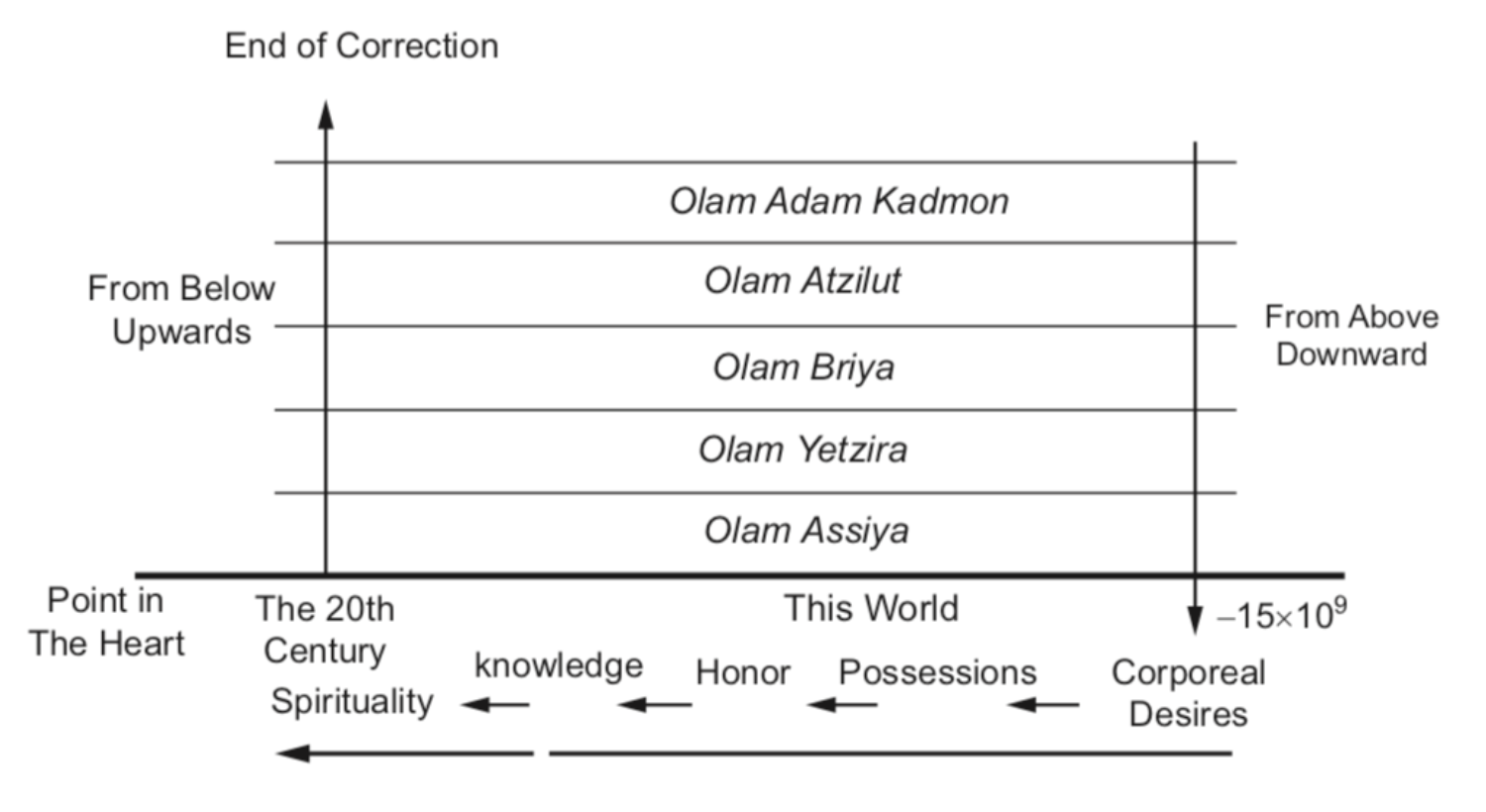
SLIDE #8 - Diagram "The World of Tzimtzum"
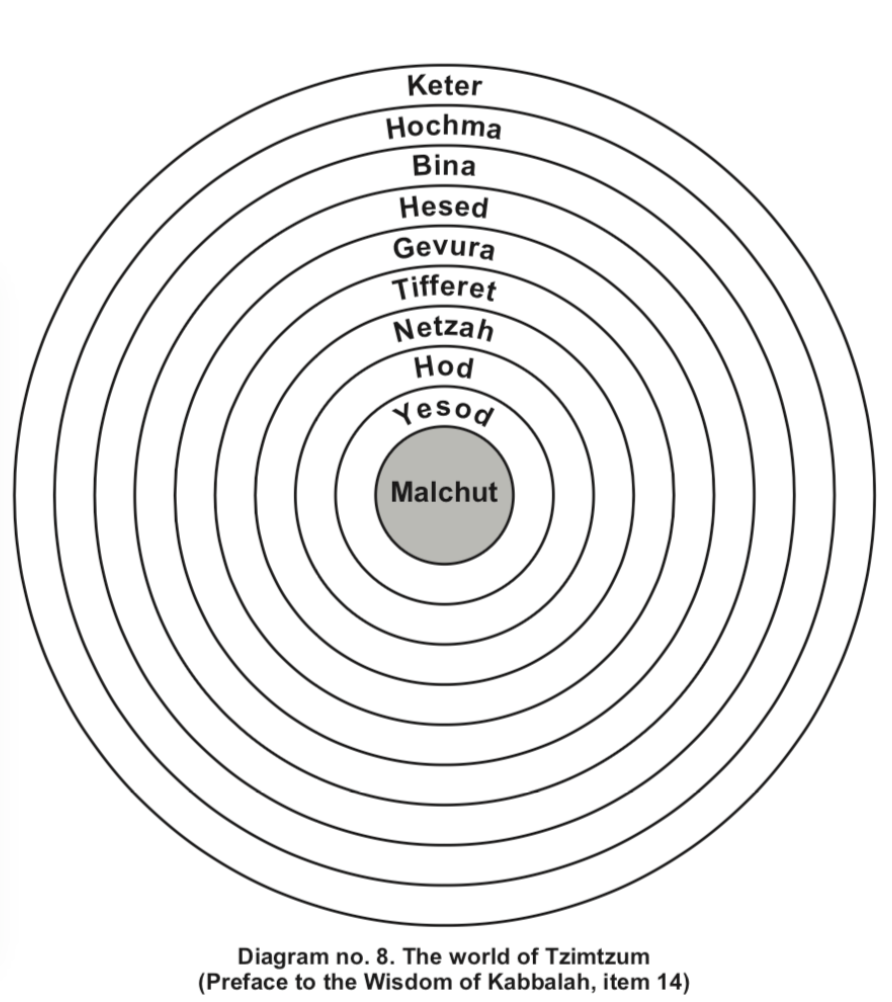
SLIDE #9
155) Therefore, we must ask, Why then did the Kabbalists obligate every person to study the wisdom of Kabbalah?
Indeed, there is a great thing about it, which should be publicized: There is a wonderful, invaluable remedy to those who engage in the wisdom of Kabbalah. Although they do not understand what they are learning, through the yearning and the great desire to understand what they are learning, they awaken upon themselves the lights that surround their souls.
- Baal HaSulam, Introduction to The Study of the Ten Sefirot, p. 155
SLIDE #10
156) Yet, there is a strict condition during the engagement in this wisdom not to materialize the matters with imaginary and corporeal issues. This is because thus they breach, “You shall not make unto you a statue or any image.”
In that event, one is rather harmed instead of receiving benefit. Therefore, our sages cautioned to study the wisdom only after forty years, or from a rav, and other such warnings. All this is for the above reason.
- Baal HaSulam, Introduction to The Study of the Ten Sefirot, p. 156
SLIDE #11 - 6 volumes of "The Study of the Ten Sefirot" - Hebrew Edition
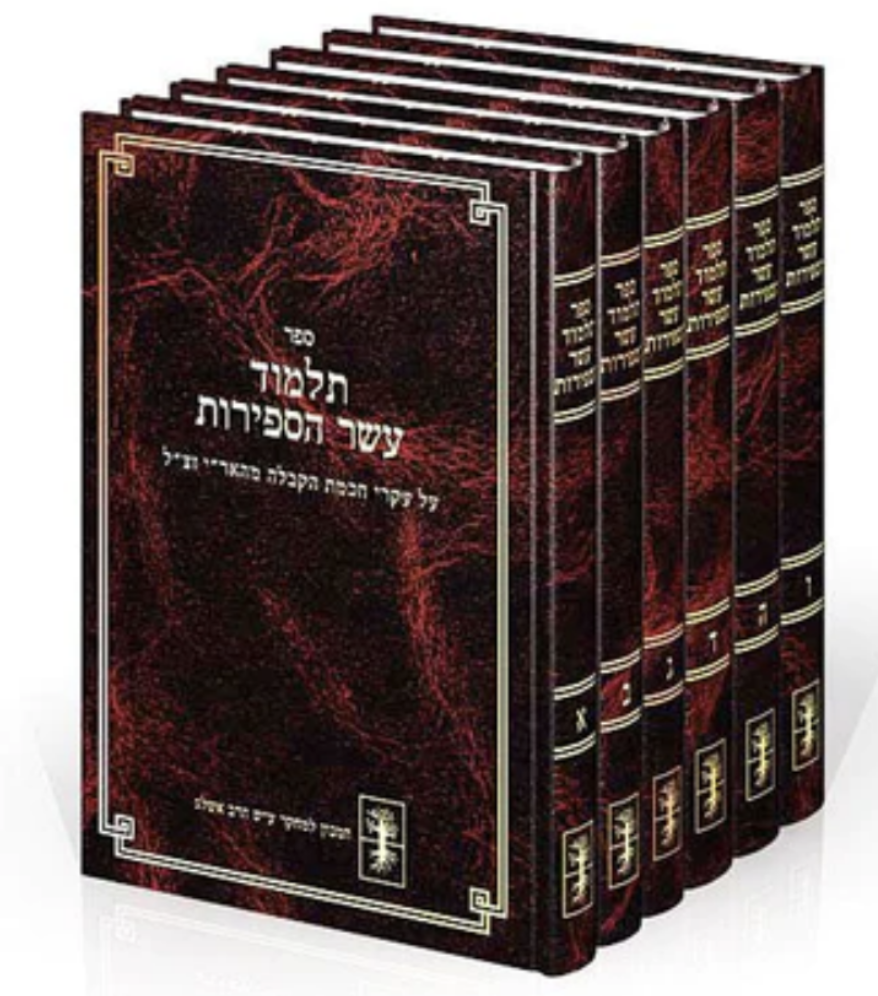
SLIDE #12 - First page of "The Study of the Ten Sefirot"
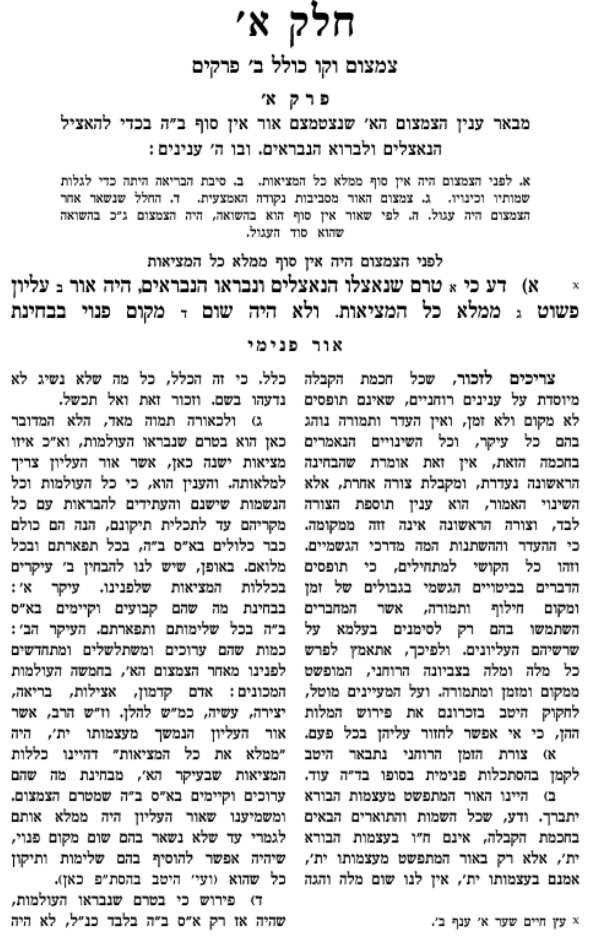
SLIDE #13 - Baal HaSulam's manuscript of the "Table of Answers for the Meaning of the Words"
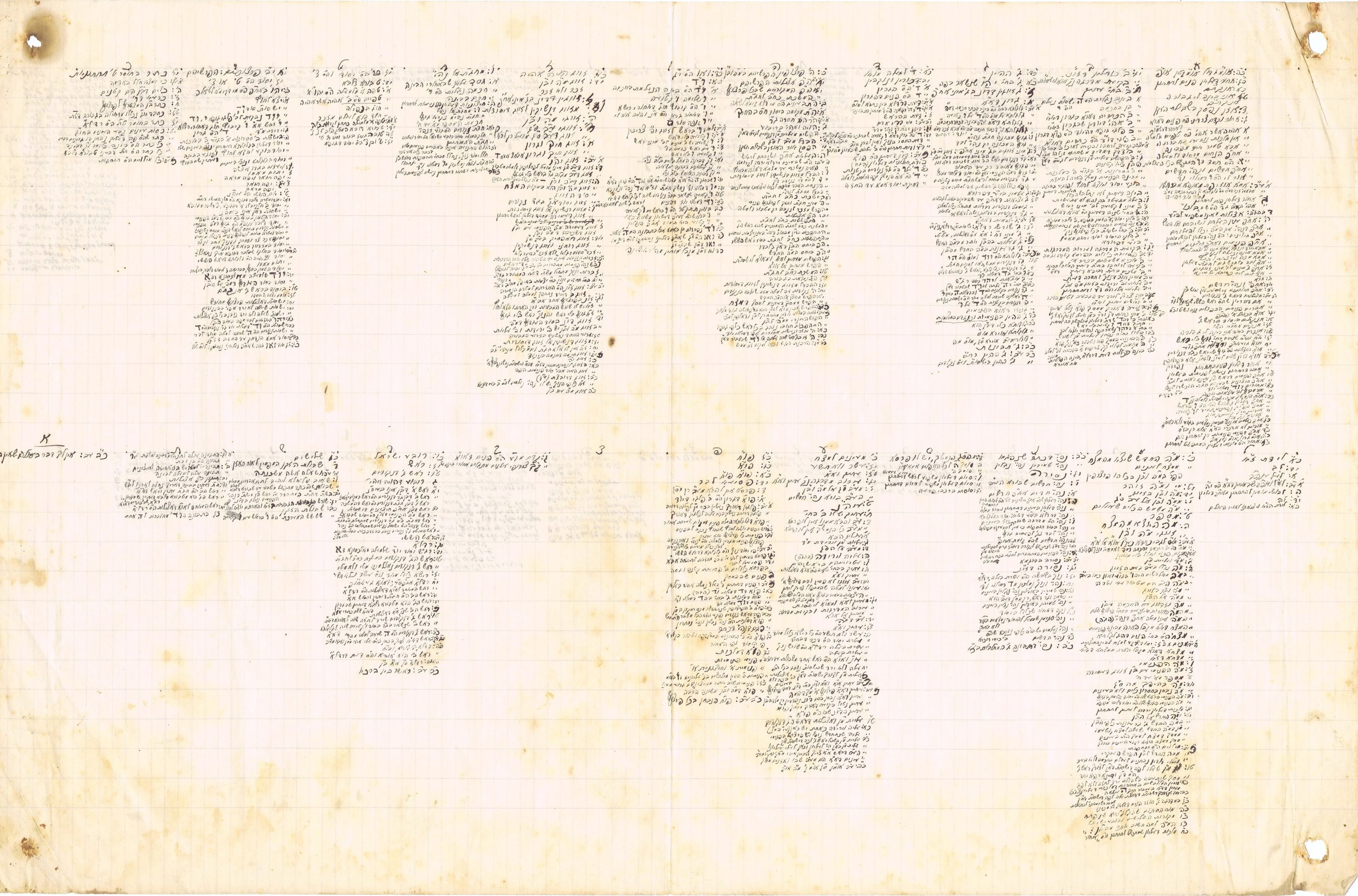
SLIDE #14 - Baal HaSulam's manuscript of the "Table of Answers for the Meaning of the Words"
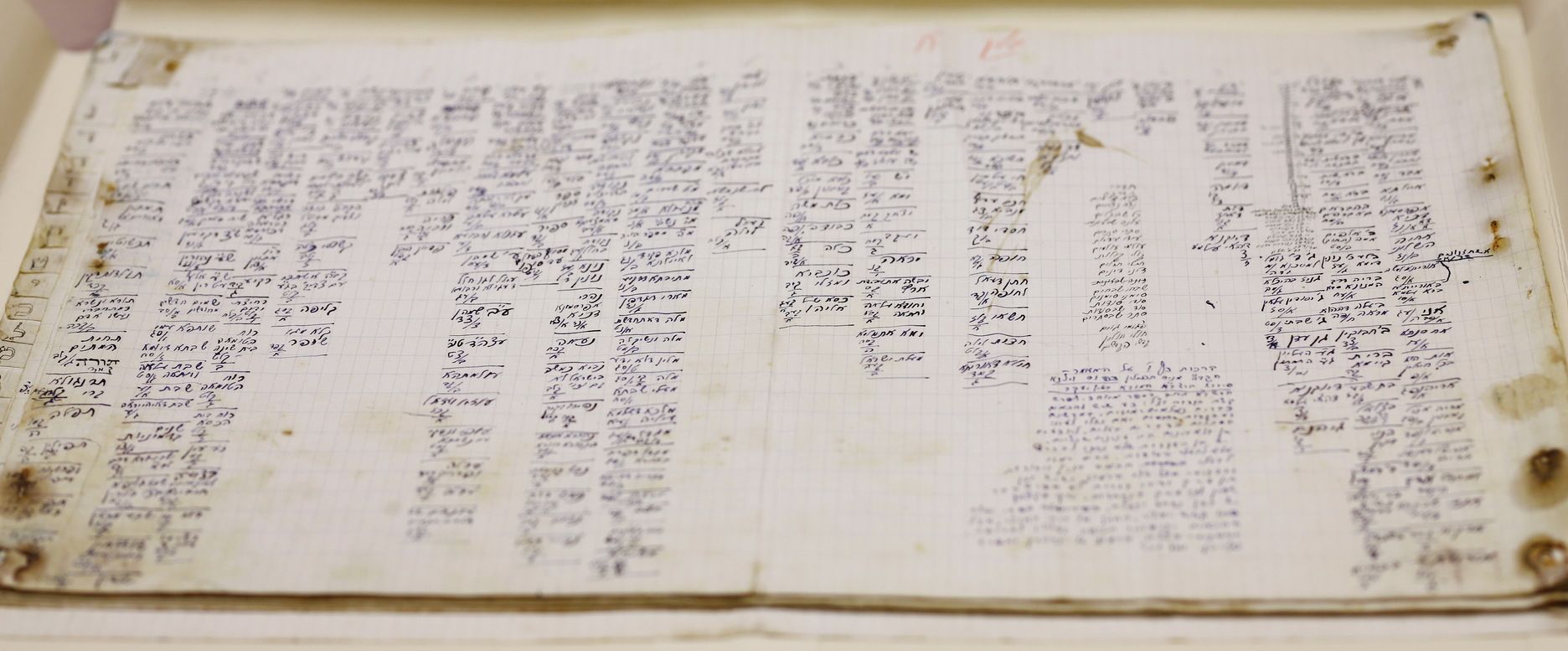
SLIDE #15
Question: What is Light?
Answer: Everything in the worlds that exists as “existence from existence,” which is everything but the substance of the Kelim.
- Baal HaSulam. Study of the Ten Sefirot. Vol. 1. Part 1, Table of Answers for the Meaning of the Words
SLIDE #16
20. The light that expands from Ein Sof to the emanated being is called direct light. This light is tied to the emanated being by a clothing of reflected light that rises from the screen upward through a coupling by striking (this will be explained later). This is called attachment because this reflected light that rises from the screen of phase four, from the straight line, holds and captures the upper light in the circle.
Thus, in a place where the reflected light does not clothe the upper light, the emanated being regards it as absent, because it cannot attain it without this clothing called reflected light.
- Baal HaSulam. Study of the Ten Sefirot, Vol. 1, Part 2. Chapter 1, p.20
SLIDE #17

SLIDE #18
It is written in The Study of the Ten Sefirot (Part 2, Chapter 1, Item 3) that Ohr Hozer ascending from the Masach [screen] upward is called “connection” because it holds and captures the upper light in the Igul [circle] in a way that where the Ohr Hozer does not clothe the upper light, that light is regarded as nonexistent from the perspective of the emanated being because he cannot attain it without this attire called Ohr Hozer.
The answer is that where there is no clothing called Ohr Hozer, the upper light is regarded as nonexistent from the perspective of the emanated being, and because the whole meaning of the Ohr Hozer is that he receives only according to the intention to bestow, as long as one has not emerged from self-reception, he does not have this Ohr Hozer. Thus, although “The whole earth is full of His glory,” it is regarded as nonexistent from the perspective of the lower one.
- Rabash. Assorted Notes 557. Concerning Ohr Hozer [reflected light]
SLIDE #19
The measures of attainment change from time to time because it depends on the ability of the lower ones. Whether great or small—to that extent the light appears. Also, every measure of attainment has its own name because the Sefirot are called “covers.” The cover comes off and the Sefira (sin. for Sefirot) begins to illuminate according to man’s work...
...They ascribed a name for each Sefira because all those who attained the light of the Creator through their work wanted all those who follow them to benefit from their discoveries, too. Therefore, they named each and every attainment, so they might understand the intentions and attainments they had attained. This would create a common language between them.
- RABASH, Letter 19